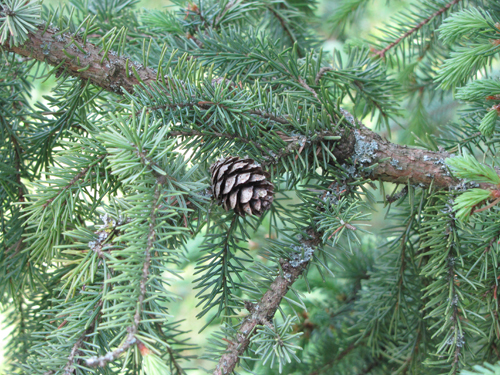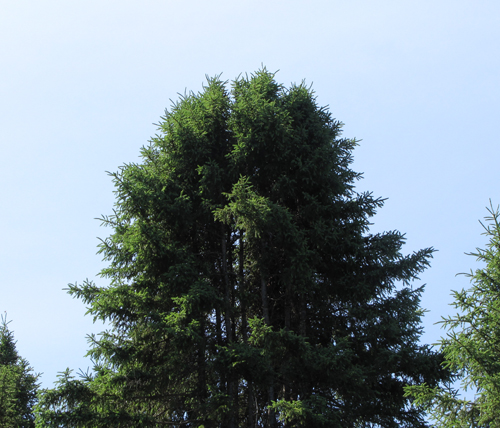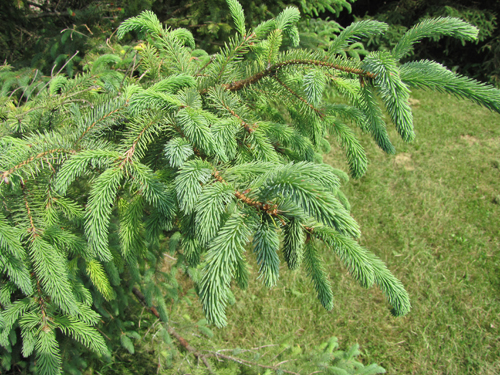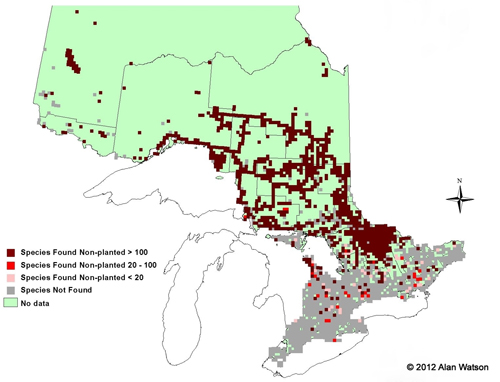Black Spruce - Picea mariana
This conifer can be found almost entirely throughout Ontario. The four-sided needles can be difficult to distinguish from white or red spruce – they are grayish-green with hairy new twigs. Black Spruce has small (2-3 cm) cones that are a purplish-brown and egg-shaped. Red squirrels love this species! When grown in low moist areas, black spruce often has a column-lake shape. It can be much broader and taller on well-drained soils.

Black spruce is considered a serotinous species – this means it relies on fire to help open its cones and aid seed dispersal! Black spruce cones will open slowly over time, but open very quickly after wildfires. Many Ontario conifers rely on natural cycles of wildfire in this way, especially in Northern Ontario!

Red squirrels love to eat the tops of the cone-bearing branches, which results in the commonly seen dense upper crown “tuft” with bare branches underneath.

New Black Spruce needles.

Ontario Tree Atlas map of non-planted Black Spruce. 1995-1999.
References
Farrar, J.L.. 1995. Trees in Canada. Fitzhenry & Whiteside Ltd. Toronto. ON. 504 pp.
Kershaw, L. 2001. Trees in Ontario: Including tall shrubs. Lone Pine Publishing. Edmonton. AB. 240 pp
Muma, W. 2011. Ontario Trees and Shrubs. [Online] Available: www.ontariotrees.com
OMNR, 2011. Ontario Ministry of Natural Resources: Ontario Tree Atlas. [Online] Available: http://www.mnr.gov.on.ca/en/Business/ClimateChange/2ColumnSubPage/267027.html
OMNR, 2008. Ontario’s Biodiversity: Species at Risk.